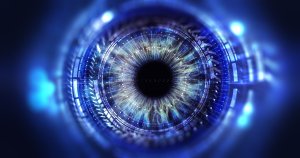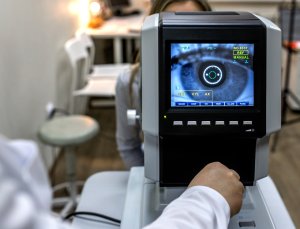What is Nonproliferative Diabetic Retinopathy Laser Treatment?

Voted Best of Berks—
eight years in a row!

In nonproliferative diabetic retinopathy (NPDR), leaking blood vessels can cause diabetic macular edema (DME) and loss of vision. The goal of laser for DME in NPDR is to stop the leakage and prevent further vision loss. In some cases of severe NPDR, peripheral laser is used to prevent the development of proliferative retinopathy.
If the number of new vessels is great, laser treatment can often prevent loss of vision. The type of laser treatment that is done when there are a lot of vessels is called Panretinal Photocoagulation. This type of laser treatment is usually done in two or more separate sessions. The idea is to use the laser to destroy all of the dead areas of the retina where the blood vessels have been closed. When these areas are treated with the laser, the retina stops manufacturing new blood vessels, and those that are already present tend to diminish or disappear.
Panretinal photocoagulation may have side effects and does not usually improve vision; it is a means of holding vision stable to prevent further loss. After laser treatments, patients may still have reduced vision or may continue to lose more vision. But if laser is indicated, the chance is that laser treatment will prevent severe loss of vision.
Panretinal photocoagulation is placed in the periphery of the retina, not the center, and side vision may be diminished. These peripheral areas are treated in order to save as much of the central vision as possible and to save the eye itself. Night vision may also be diminished. After laser, blurred vision is very common. Usually, this blur goes away but in a small number of patients, some blur may continue forever.
Find a Doctor
Physician information including education, training, practice location and more.
Schedule an Appointment
Call 800-762-7132 or make an appointment online.





